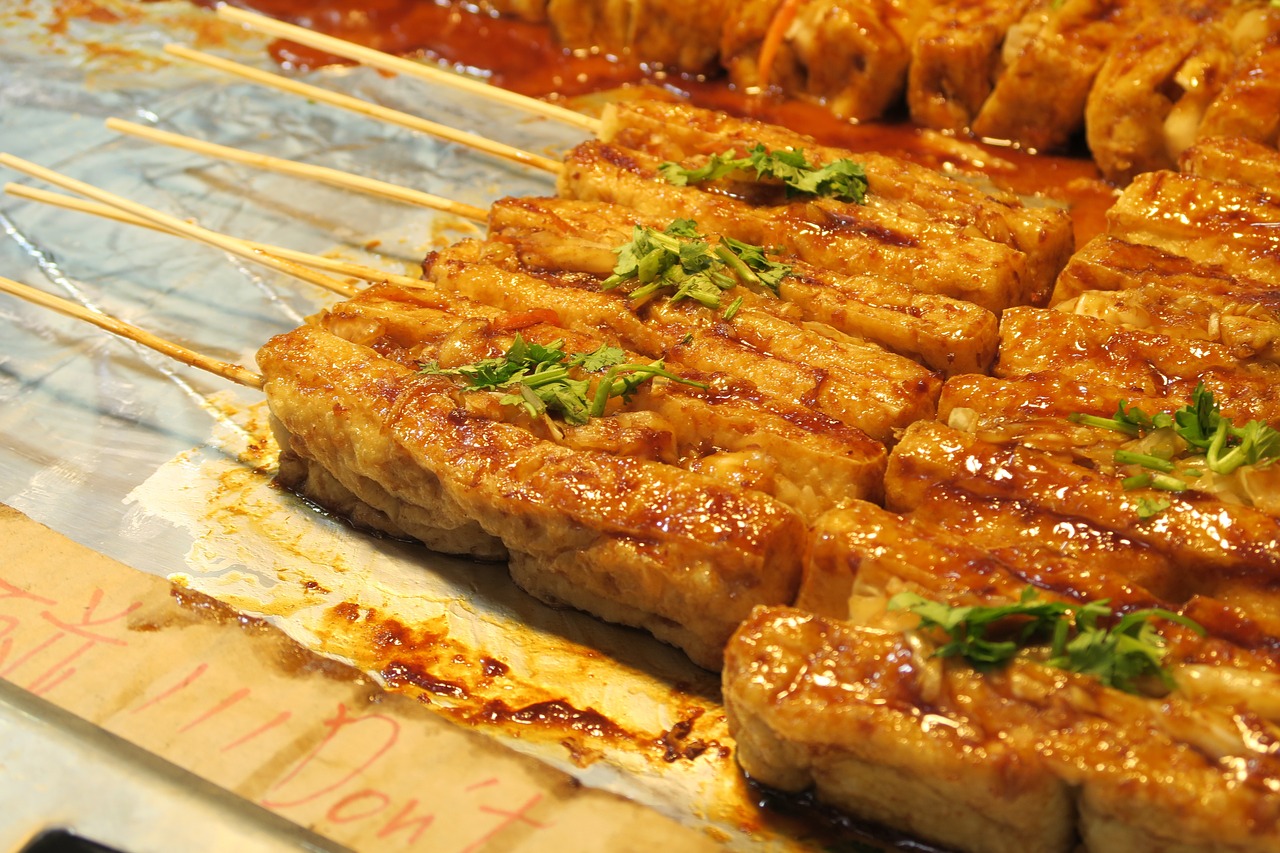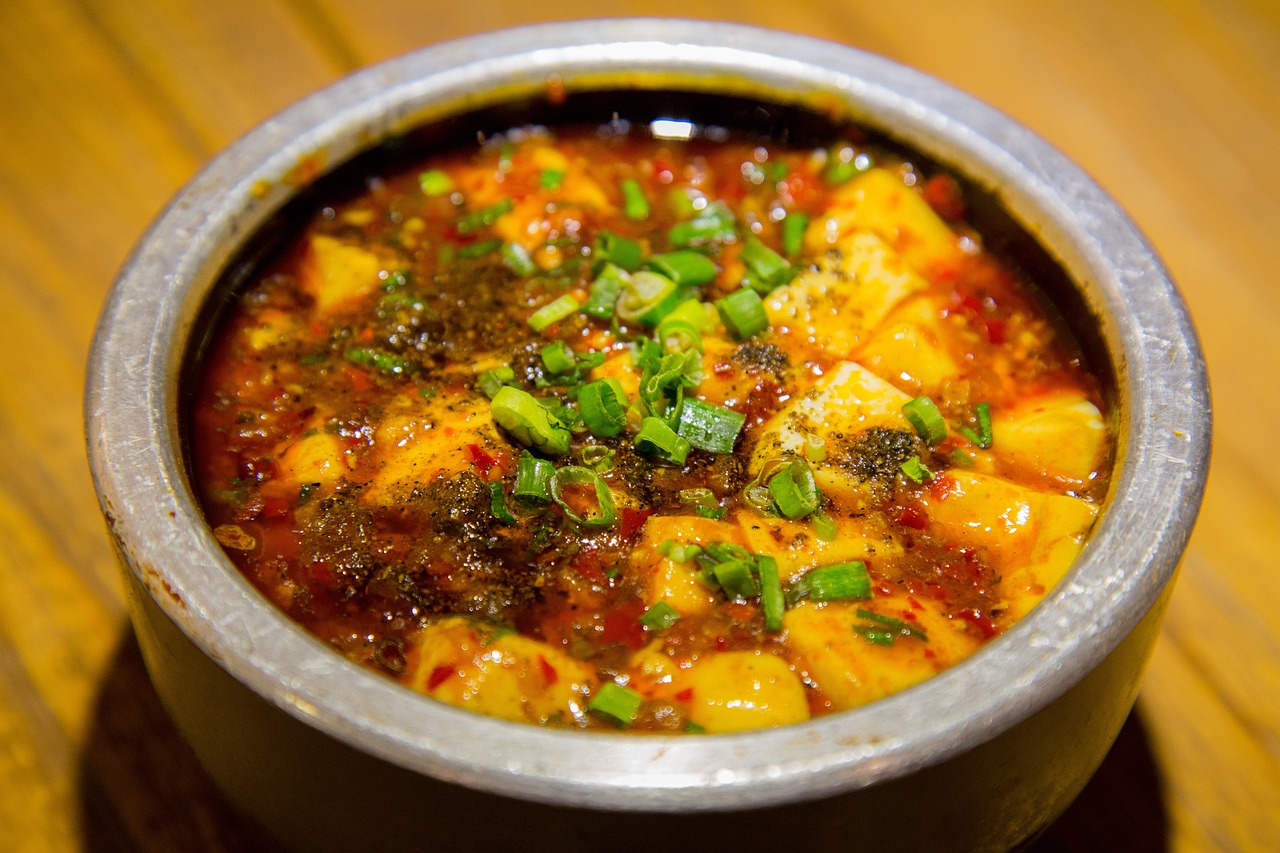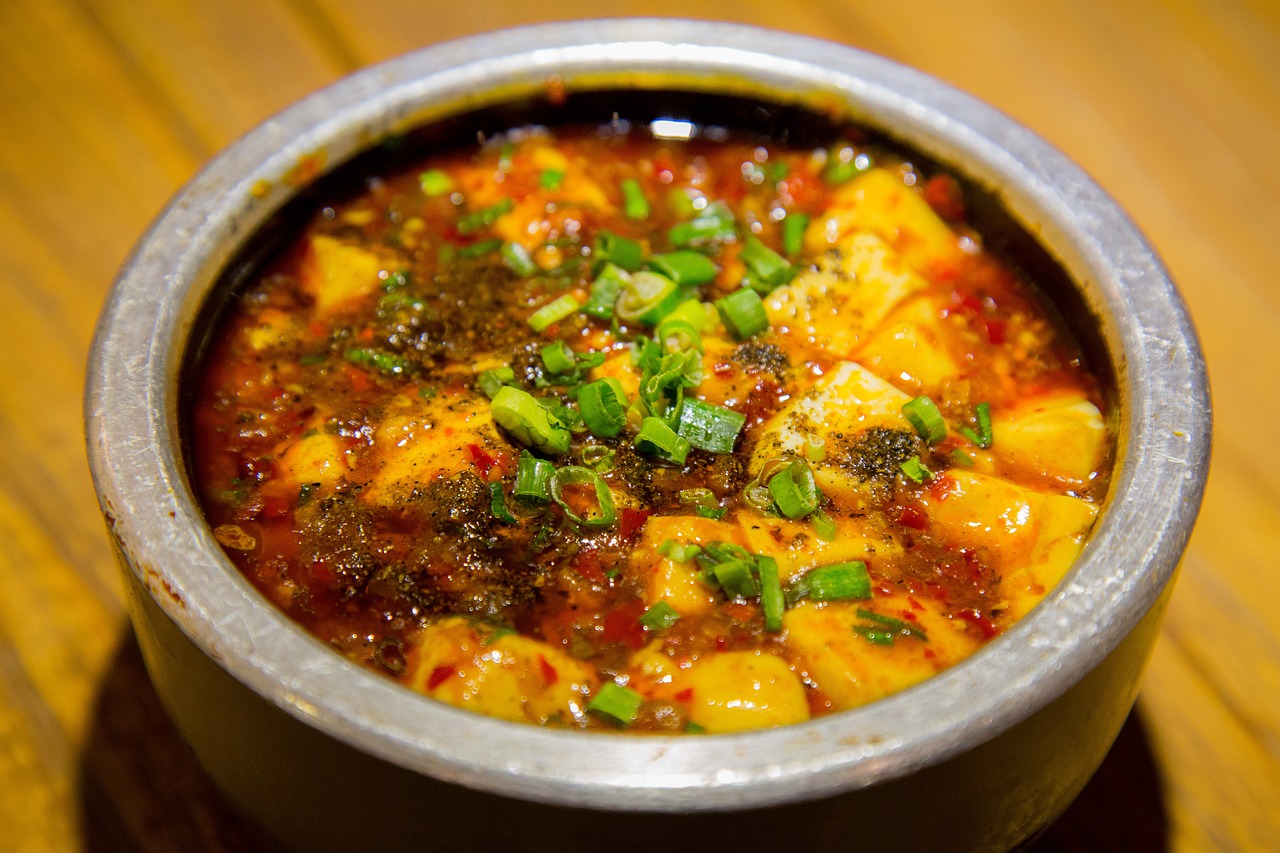Are you looking for a delicious and nutritious way to enhance your meals? Look no further than cooking with tofu! This versatile ingredient is not only packed with protein, but it can also be prepared in a multitude of ways to suit any culinary preference. Whether you’re a seasoned tofu enthusiast or new to the world of plant-based cooking, Tastepan’s collection of tofu recipes will have you excited to incorporate this healthy ingredient into your meals. With our expert advice and flavorful recipes, you can nourish your body without compromising on taste. Get ready to explore the endless possibilities of cooking with tofu!

Benefits of Cooking with Tofu
Tofu, also known as bean curd, is a versatile and protein-packed ingredient that offers numerous health benefits. Incorporating tofu into your diet can be an excellent choice for both vegetarians and non-vegetarians alike. Here are some of the key benefits of cooking with tofu:
High in protein
Tofu is an excellent source of protein, making it a popular choice among individuals seeking plant-based protein options. It contains all the essential amino acids, making it a complete protein source. Including tofu in your meals can provide the necessary protein your body needs for energy, muscle repair, and overall health.
Source of essential amino acids
Amino acids are the building blocks of proteins, and our bodies require them for various functions. Tofu contains all nine essential amino acids that our bodies cannot produce on their own. By incorporating tofu into your diet, you can easily meet your amino acid requirements without relying solely on animal-based protein sources.
Low in fat
If you’re looking for a lean protein option, tofu is an ideal choice. It is naturally low in fat, especially saturated fat, which can be harmful when consumed in excess. By opting for tofu instead of high-fat meats, you can reduce your overall fat intake and maintain a healthier diet.
Cholesterol-free
Unlike animal-based protein sources, tofu is completely free of cholesterol. High levels of cholesterol in the blood can increase the risk of heart disease and other cardiovascular problems. By choosing tofu as an alternative, you can enjoy a nutritious protein source without worrying about harmful cholesterol levels.
Contains iron and calcium
Tofu is rich in essential minerals, such as iron and calcium. Iron plays a crucial role in producing red blood cells and carrying oxygen throughout the body, while calcium is essential for strong bones and teeth. By incorporating tofu into your meals, you can boost your intake of these vital minerals and support overall health.
Suitable for vegetarians and vegans
One of the most significant benefits of cooking with tofu is that it is an excellent option for vegetarians and vegans. It provides a plant-based protein source that can be used as a substitute for meat in various recipes. Tofu’s versatility allows for endless culinary possibilities, making it an essential ingredient in vegetarian and vegan cooking.
Tofu Varieties
Tofu comes in various varieties, each offering unique textures and flavors that can be used in different recipes. Here are some of the most popular tofu varieties:
Silken tofu
Silken tofu has a smooth and delicate texture, making it an excellent choice for creamy sauces, dressings, and desserts. It blends well and creates a velvety consistency that can add richness and creaminess to your dishes.
Soft tofu
Soft tofu has a slightly firmer texture than silken tofu but is still delicate. It holds its shape better, making it suitable for soups, stews, and stir-fries. Soft tofu absorbs flavors well, making it an excellent option for marinating.
Firm tofu
Firm tofu is a versatile tofu variety that holds its shape during cooking. It has a slightly spongy texture and can be sliced, cubed, or crumbled based on your recipe requirements. Firm tofu works well in stir-fries, oven-baked dishes, and grilled recipes.
Extra-firm tofu
Extra-firm tofu is the densest tofu variety, offering a firm and meaty texture. It is perfect for recipes where you want the tofu to hold its shape, such as grilling, baking, or stir-frying. Extra-firm tofu can be sliced into steaks or cut into cubes for various dishes.
Smoked tofu
Smoked tofu has a distinct smoky flavor that adds depth to your recipes. It is an excellent choice for salads, sandwiches, and stir-fries, as it provides a unique and savory taste. Smoked tofu is often pre-seasoned and ready to eat.
Marinated tofu
Marinated tofu is tofu that has been soaked in a flavorful marinade, enhancing its taste and texture. It comes in various marinade options, such as teriyaki, barbecue, or sesame. Marinated tofu is delicious when grilled, baked, or pan-fried.
Flavored tofu
Flavored tofu refers to tofu infused with different flavors and seasonings. It comes in a variety of options, including spicy, garlic, or herb-flavored tofu. Flavored tofu can add an extra kick to your recipes and make them more exciting and flavorful.

Cooking Techniques for Tofu
To fully enjoy the flavor and texture of tofu, it’s essential to use the appropriate cooking techniques. Here are some popular cooking methods for tofu:
Pressing tofu
Pressing tofu helps remove excess moisture, allowing it to absorb more flavors during cooking. To press tofu, place it between kitchen towels or paper towels and apply gentle pressure to squeeze out the water. This technique works well before marinating, grilling, or baking tofu.
Marinating tofu
Marinating tofu enhances its flavor and adds moisture to the tofu. You can marinate tofu in your favorite sauces, dressings, or seasonings to infuse it with delicious flavors. It’s best to marinate tofu for at least 30 minutes to allow the flavors to penetrate the tofu.
Baking tofu
Baking tofu is a healthy and convenient cooking method that results in a crispy exterior and a tender interior. To bake tofu, simply toss it in some oil and your desired seasonings, then arrange it on a baking sheet. Bake tofu in a preheated oven until it turns golden brown and develops a crispy texture.
Stir-frying tofu
Stir-frying tofu is a quick and easy way to incorporate it into your meals. Start by heating a small amount of oil in a wok or skillet, then add your desired vegetables, sauces, and spices. Once the vegetables are almost cooked, add tofu cubes and stir-fry until they are evenly coated and heated through.
Grilling tofu
Grilling tofu gives it a smoky and charred flavor, perfect for summertime cookouts. To grill tofu, brush it with oil and season it with your preferred spices or marinades. Place the tofu slices on a preheated grill and cook them for a few minutes on each side until they develop grill marks.
Blending tofu
Blending tofu creates a smooth and creamy texture that can be used in sauces, dressings, and desserts. Simply blend silken tofu with your desired ingredients, such as fruits, cocoa powder, or herbs, to create a luscious and nutritious base for your recipes.
Scrambling tofu
Scrambled tofu is a popular vegan alternative to scrambled eggs. Crumble firm or extra-firm tofu and sauté it with vegetables, spices, and sauces until it resembles the texture of scrambled eggs. You can enjoy scrambled tofu on its own, in breakfast burritos, or as a filling for sandwiches.
Tofu as Main Dish
Tofu can shine as the star ingredient in various main dishes, offering a satisfying and nutritious meal option. Here are some delicious recipes featuring tofu as the main component:
Tofu stir-fry with vegetables
A vibrant and colorful tofu stir-fry with an array of fresh vegetables is a healthy and filling option. Sauté firm tofu cubes with your favorite vegetables like bell peppers, broccoli, and carrots, and toss them in a flavorful sauce. Serve it over steamed rice or noodles for a complete meal.
Crispy baked tofu nuggets
Crispy baked tofu nuggets make a fantastic plant-based alternative to chicken nuggets. Coat firm or extra-firm tofu cubes in a mixture of breadcrumbs, herbs, and spices, and bake them until they become golden brown and crispy. Serve them with a dipping sauce such as barbecue or sweet chili for a delightful appetizer or main course.
Tofu and vegetable curry
A comforting and fragrant tofu and vegetable curry is a perfect choice for those craving a flavorful and satisfying meal. Simmer cubed tofu with an assortment of vegetables in a fragrant curry sauce made from coconut milk, spices, and herbs. Serve the curry over steamed rice or with warm naan bread.
Tofu noodle soup
Tofu noodle soup is a comforting and nourishing dish that’s perfect for colder days. Combine soft tofu cubes with a flavorful broth, noodles, and an assortment of vegetables. Garnish the soup with fresh herbs and a squeeze of lime for an extra burst of flavor.
Grilled teriyaki tofu
Grilled teriyaki tofu is a delicious and easy-to-make dish that’s bursting with Asian-inspired flavors. Marinate firm tofu slices in a homemade teriyaki sauce, then grill them until they develop a slightly charred exterior. Serve the grilled teriyaki tofu with steamed rice and stir-fried vegetables for a well-balanced meal.
Tofu lettuce wraps
Tofu lettuce wraps are a light and refreshing option that’s perfect for a quick and healthy meal. Sauté crumbled tofu with vegetables, ginger, garlic, and your favorite sauces, then serve the flavorful mixture in crisp lettuce leaves. Top the wraps with chopped peanuts, fresh herbs, and a drizzle of sauce for added texture and flavor.

Tofu as Protein Booster
In addition to being a main dish, tofu can also be used as a protein booster to enhance the nutritional value of your meals. Here are some fun and creative ways to include tofu as a protein source:
Tofu scramble
Tofu scramble is a popular vegan alternative to scrambled eggs that can be enjoyed for breakfast or brunch. Crumble firm tofu and sauté it with vegetables and spices to create a flavorful and protein-packed dish that mimics the texture of scrambled eggs.
Tofu smoothies
Add silken tofu to your favorite smoothie recipes for a creamy and protein-rich beverage. Silken tofu blends well with fruits, greens, and other ingredients, providing a velvety texture and essential amino acids.
Tofu protein pancakes
Boost the protein content of your pancakes by adding tofu to the batter. Blend silken tofu with the other pancake ingredients to create a smooth and nutritious batter. The tofu adds a slight creaminess while providing a protein punch to start your day.
Tofu protein balls
Combine crumbled tofu with oats, nut butter, and your choice of mix-ins to create protein-rich energy balls. Roll the mixture into bite-sized balls, then refrigerate or freeze them for a convenient and satisfying snack on-the-go.
Tofu protein bars
Make your own protein bars at home by blending tofu with nuts, seeds, and other protein-rich ingredients. Press the mixture into a baking dish, then refrigerate or bake it until it sets. Cut the mixture into bars, and you’ll have a homemade protein-packed snack that can be enjoyed anytime.
Tofu in International Cuisines
Tofu is an incredibly versatile ingredient that can be incorporated into various international cuisines. Here are some delicious tofu recipes from around the world:
Mapo tofu (Chinese)
Mapo tofu is a popular Sichuan dish known for its spicy and flavorful sauce. It typically consists of soft tofu cubes cooked in a spicy bean sauce with minced pork or beef. However, you can easily make it vegetarian by omitting the meat and using vegetable broth instead.
Tofu pad Thai (Thai)
Tofu pad Thai is a classic Thai street food dish featuring stir-fried rice noodles, vegetables, and tofu with a sweet and tangy sauce. This vegetarian version replaces the usual eggs and shrimp found in traditional pad Thai with tofu, making it a perfect option for those following a plant-based or vegan diet.
Tofu tikka masala (Indian)
Tofu tikka masala is a vegetarian twist on the popular Indian dish, typically made with chicken. Marinated tofu cubes are cooked in a rich and aromatic tomato-based sauce with a blend of spices. Serve it with naan bread or rice for a satisfying and flavorful meal.
Tofu katsu (Japanese)
Tofu katsu is a Japanese dish that features breaded and deep-fried tofu cutlets. It is a vegetarian alternative to the popular meat-based dish, tonkatsu. Serve tofu katsu with a side of rice, miso soup, and a tangy katsu sauce for a delicious and satisfying meal.
Kimchi tofu stew (Korean)
Kimchi tofu stew, also known as soondubu jjigae, is a comforting and spicy Korean soup. It is typically made with soft tofu, kimchi, vegetables, and often includes meat or seafood. However, you can enjoy a vegetarian version by omitting the meat and using vegetable broth instead.
Tofu spring rolls (Vietnamese)
Fresh tofu spring rolls are a vibrant and healthy Vietnamese appetizer or light meal option. Wrap soft tofu, fresh vegetables, and herbs in rice paper, then serve them with a flavorful dipping sauce. These refreshing spring rolls provide a delicate balance of flavors and textures.
Tips for Cooking with Tofu
To make the most of your tofu cooking experience, here are some helpful tips:
Use firm or extra-firm tofu for stir-frying and grilling
Firm and extra-firm tofu varieties are best for stir-frying and grilling, as they hold their shape well during high-heat cooking. They provide a satisfying texture and are less likely to crumble or fall apart.
Freeze tofu for a meatier texture
Freezing tofu and then thawing it before cooking can change its texture and make it more meat-like. Freezing creates ice crystals within the tofu, giving it a chewier and firmer consistency. This technique is especially useful for recipes that require a meatier texture, such as stir-fries or grilling.
Press tofu to remove excess moisture
Pressing tofu before cooking helps eliminate excess moisture, allowing the tofu to absorb flavors better and achieve a firmer texture. Use a tofu press or place the tofu between paper towels or kitchen towels and apply gentle pressure to remove the water.
Marinate tofu for enhanced flavor
Marinating tofu adds depth and complexity to its taste. Tofu readily absorbs flavors, so marinating it in your favorite sauces, dressings, or spices can greatly enhance its taste and make it more enjoyable to eat. Allow tofu to marinate for at least 30 minutes or longer for maximum flavor.
Use silken tofu in desserts and smoothies
Silken tofu has a smooth and creamy texture, making it an excellent choice for desserts and smoothies. Whip silken tofu with sweeteners, fruits, and flavorings to create deliciously creamy puddings, mousse, or smoothies.
Blend tofu for creamy sauces and dressings
Blending tofu creates a creamy and rich texture that can be used in sauces, dressings, and dips. Whether you’re making a vegan Alfredo sauce or a creamy salad dressing, blending silken or soft tofu can add a luscious and nutritious element to your recipes.
Experiment with different seasonings and spices
Tofu’s neutral flavor makes it a perfect canvas for different seasonings and spices. Don’t be afraid to experiment with different flavor profiles. Try using Asian-inspired seasonings such as soy sauce, ginger, and garlic, or explore Mediterranean flavors with herbs like basil, oregano, and thyme.
Health Considerations
While tofu offers numerous health benefits, there are some considerations to keep in mind:
Choosing organic and non-GMO tofu
Opting for organic and non-GMO tofu ensures that you’re selecting a product without the use of genetically modified organisms or harmful pesticides. Look for labels that indicate the tofu is organic and non-GMO for a healthier and more sustainable option.
Moderation in soy consumption
Soy foods, including tofu, are safe for most people when consumed in moderation. However, it’s essential to maintain a balanced diet and avoid excessive soy consumption. Incorporate tofu along with a variety of other protein sources to ensure a well-rounded diet.
Individual allergies and sensitivities
While tofu is generally well-tolerated, some individuals may have allergies or sensitivities to soy products. If you experience any adverse reactions after consuming tofu, such as digestive issues or allergic symptoms, it’s best to consult a healthcare professional.
Balancing tofu with other protein sources
While tofu is an excellent source of protein, it’s still important to incorporate a variety of protein sources in your diet. Combining tofu with other plant-based proteins such as beans, lentils, nuts, and seeds ensures that you’re getting a complete range of amino acids.
Consulting a healthcare professional
If you have any specific dietary concerns or medical conditions, it’s always a good idea to consult with a healthcare professional before making significant changes to your diet. They can provide personalized advice and guidance based on your individual needs and health status.
Tofu Storage and Shelf Life
To ensure the freshness and longevity of your tofu, here are some storage tips:
Refrigerating tofu
Tofu should be refrigerated to maintain its freshness and prevent spoilage. Once opened, place the tofu in an airtight container or wrap it in a clean kitchen towel or paper towel to keep it fresh. Properly stored tofu can usually last for up to 5 to 7 days in the refrigerator.
Freezing tofu
If you have leftover tofu or want to extend its shelf life, freezing is an option. Simply drain the tofu, wrap it tightly in plastic wrap or place it in an airtight freezer bag, and freeze it for up to three months. Thaw frozen tofu in the refrigerator before using it in recipes.
Proper packaging and storage
To prevent cross-contamination and maintain tofu’s quality, it’s important to store it properly. Keep tofu in its original packaging until ready to use, or transfer it to an airtight container. The packaging helps prevent any odors from being absorbed by the tofu.
Checking for signs of spoilage
Before using tofu, it’s essential to check for signs of spoilage. Discard tofu if it has an off smell, unusual texture, or visible mold. Fresh tofu should have a mild, slightly sweet aroma, and a firm but tender texture.
Proper storage and handling of tofu ensure that you can enjoy its deliciousness and maximize its shelf life.
Conclusion
Incorporating tofu into your diet offers numerous benefits, both for your health and for culinary enjoyment. With its high protein content, essential amino acids, low fat content, and cholesterol-free nature, tofu is an excellent addition to a balanced and nutritious diet.
Experimenting with the various tofu varieties, cooking techniques, and recipes allows you to explore the versatility of this protein-packed ingredient. From main dishes to protein boosters and international cuisines, tofu’s adaptability ensures there’s something for everyone.
Remember to use tofu as part of a well-rounded diet and to consider factors such as organic and non-GMO options, individual allergies, and protein source balance. By doing so, you can fully appreciate the health benefits and versatility that tofu has to offer.
So why not give tofu a try? Discover the numerous ways you can incorporate it into your meals and enjoy the versatility and health benefits it brings to your cooking. Let your taste buds rejoice as you embark on a journey of nutritious and delicious tofu-infused creations.

